#Konrad Lorenz
Text

Esistono due strade soltanto, per sfuggire alla miseria umana: suonare l’organo e giocare con i gatti.
Konrad Lorenz
68 notes
·
View notes
Text
Der Wunsch, ein Tier zu halten, entspringt einem uralten Grundmotiv – nämlich der Sehnsucht des Kulturmenschen nach dem verlorenen Paradies.
The desire to keep an animal stems from an ancient motive – namely, the longing of civilized man for the lost paradise.
Konrad Lorenz (1903 – 1989), Austrian biologist, founder of classical behavioral biology
18 notes
·
View notes
Text
"The fidelity of a dog is a precious gift demanding no less binding moral responsibilities than the friendship of a human being. The bond with a dog is as lasting as the ties of this earth can ever be."
- Konrad Lorenz
2 notes
·
View notes
Text


What do Mickey Mouse, Pekingese and Shirley Temple have in common? About Konrad Lorenz's Kindchenschema
The fact that I managed to find photo of Shirley, most likely with a Pekingese, is purely by accident. To find the real answer to this question, we must go back to 1943, when the ethologist Konrad Lorenz proposed the term baby schema (German: Kindchenschema) in one of his works. Baby schema is a set of infantile physical features such as the relatively large head, round face, big eyes, small nose, mouth and chin, convex cheeks and smooth skin.
These features, occurring together or individually, act as a stimulus for being perceived as cute, loveable and motivate caring in others. The instinctive reaction to a baby schema is transferred to similar combinations of features in animals and inanimate objects. That's why people often show love and care for Pekingese (generally for puppies, kittens and everything smol) purely because of their adorable baby appearance [K. Lorenz, Studies in animal and human behaviour vol. II, 1971, pp. 154-179].
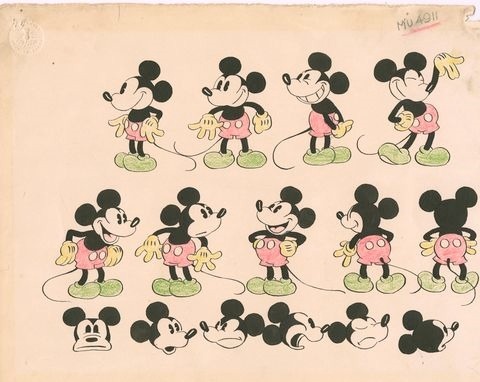

The baby schema also applies to animated objects and toys (teddy bear also evolved, changing in appearance from a realistic bear to a stuffed animal resembling a baby). Stephen Jay Gould, in an essay from 1978, noted that the character of Mickey Mouse changed over the course of 50 years, during which he acquired childlike features. Mickey's appearance indicates that he has become younger, although his actual age has not changed. As Mickey became more visually likable, he became more and more gentle and polite in behavior. It was similar with Donald Duck, although due to his elongated beak he seems still more mature [S. J. Gould, A Biological Homage to Mickey Mouse, 1978].
A baby face in an adult as the key to success
Just like in the case of Mickey Mouse, whose age did not change but he looked younger, several studies have shown that adults with childish features are perceived as younger than adults of the same age who possess less these features. Therefore, people with a baby face may be assigned traits stereotypically associated with children (naivety, honesty, kindness and warmth). Also, women with elements of baby schema are perceived as more physically attractive than their more mature-looking peers [Article 1, Article 2, Article 3].



So what impact does this have on our everyday lives? A huge proportion of the images of women's faces that we see on social media and popular culture have a very high percentage of baby faces. Features associated with someone who is not fully adult arouse our sympathy, which means that the ideal of beauty is simply a younger appearance. In one of the studies, Doug Jones compared the facial dimensions of models from color magazines with the dimensions of students aged 20-22. This analysis showed that female models have extremely childish faces:
predicted ages based on facial proportions are 6.8 years and 7.4 years. This does not mean that the facial proportions of models match those of real 7-year-olds, since the ages predicted by these equations are based on naive linear extrapolations of age-related changes in adult facial proportions. It does argue strongly, however, that female models' faces represent a "supernormal stimulus", presenting in exaggerated form the features that distinguish young women from old one [D. Jones, Sexual selection, physical attractiveness, and facial neoteny: cross-cultural evidence and implication, 1995, p. 733].


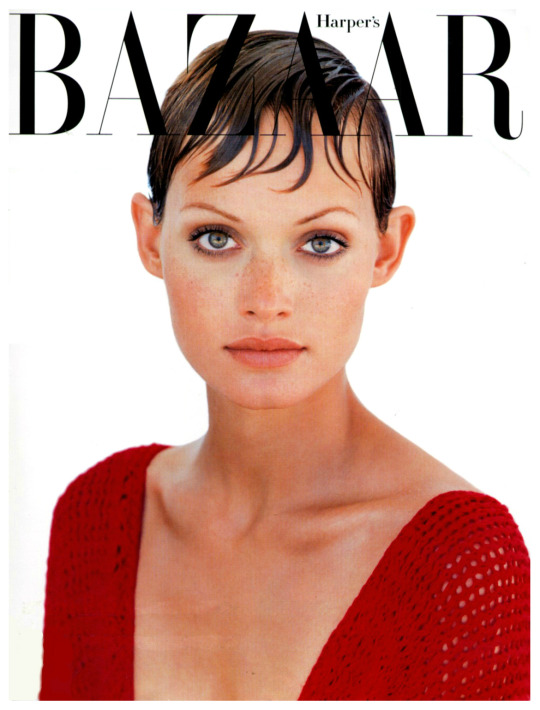
Thus, Mickey Mouse, tiny animals, Judy Garland, Marilyn Monroe, supermodels and Shirley Temple (as a child and as an adult) all share a high level of baby schema. Therefore, the more we manage to cheat our real age, the more we can fit into what seems to be general cultural canons of beauty. Clearly emphasized youth also makes us more attractive, desirable and famous.
#90s supermodels#baby face#baby schema#konrad lorenz#shirley temple#judy garland#marilyn monroe#youth#studyspo#studyblr#study community#research effects#reacher#research#mickey mouse#psychology#sociology
3 notes
·
View notes
Photo

“Scientific truth is universal, because it is only discovered by the human brain and not made by it.”
-- Konrad Lorenz
#Konrad Lorenz#Reality's Last Stand#science#science is universal#truth#objective reality#religion is a mental illness
26 notes
·
View notes
Text
Non esistono condizioni ideali in cui scrivere, studiare, lavorare o riflettere, ma è solo la volontà, la passione e la testardaggine a spingere un uomo a perseguire il proprio progetto.
Konrad Lorenz
26 notes
·
View notes
Text
La conoscenza degli animali
“Come l’origine dell’uomo è passata attraverso la condizione animale, così la chiave della comprensione dell’uomo passa attraverso la conoscenza degli animali.“
Konrad Lorenz

View On WordPress
2 notes
·
View notes
Text
In 1937 Niko Tinbergen spent the spring with Lorenz at Altenberg and between them they invented the science of ethology – the study of animal instincts.
"Nature via Nurture: Genes, Experience, and What Makes Us Human" - Matt Ridley
#book quote#nature via nurture#matt ridley#nonfiction#niko tinbergen#konrad lorenz#ethology#spring#altenberg#science#innovation#instinct
4 notes
·
View notes
Text
Zeichen & Zeiten: Ilona Jerger – „Lorenz“ – eine Rezension von Constanze Matthes
Zeichen & Zeiten: Ilona Jerger – „Lorenz“ – eine Rezension von Constanze Matthes
(Hördauer 09 Minuten)
https://literaturradiohoerbahn.com/wp-content/uploads/2023/12/ZuZ_Lorenz_I_Jerger_UK-Upload.mp3
„Jedes Lebewesen ist nur ein Durchgangsstadium zum nächsten.“
Welche Ereignisse, welche Begegnungen entscheiden über den Lebensweg eines Menschen? Im Fall des berühmten Verhaltensforschers und…

View On WordPress
#Constanze Matthes#Ilona Jerger#Konrad Lorenz#Lorenz#Piper#Rezension#Stories#Uwe Kullnick#Verhaltensforscher#Xi Xi#Zeichen und Zeiten
0 notes
Text
Saldırganlığı tehlikeli kılan, aniden belirmesidir.
Konrad Lorenz
0 notes
Text



Amare un gatto significa apprezzarne
la natura; essi scelgono chi amare
e non dipendono da nessuno.
.
Konrad Lorenz
34 notes
·
View notes
Text
Konrad Lorenz – İşte İnsan (2023)
Saldırganlığın, insan türünün hayatta kalmasına yönelik işlevi nedir?
Ünlü etoloji uzmanı Konrad Lorenz, “insanın nispeten ilkel ama o ölçüde de tehlikeli temel dürtü ve içgüdülerini” hatırlatma görevini kusursuz bir biçimde yerine getiriyor.
Lorenz’in, saldırganlığı, insan eylem ve tepkilerinin temel nedenlerinden biri olarak belirleyip bu kitapta ikna edici bir şekilde açıklamasından bu…

View On WordPress
#2023#Alfa Yayınları#Evrim Tevfik Güney#Konrad Lorenz#Saldırganlığın Doğası Üzerine#Veysel Atayman#İşte İnsan
0 notes
Text
Konrad Lorenz-Zitat
“Gedacht heißt nicht immer gesagt, gesagt heißt nicht immer gehört, gehört heißt nicht immer richtig verstanden, verstanden heißt nicht immer einverstanden, einverstanden heißt nicht immer angewendet, angewendet heißt noch lange nicht beibehalten.”
Konrad Lorenz
View On WordPress
0 notes
Text
Il gatto è una creatura indipendente, che non si considera prigioniera dell'uomo e stabilisce con lui un rapporto alla pari.
Konrad Lorenz
29 notes
·
View notes
Text
Endearing through the Alien Lens: A Clue About the Primitive Irken?

I love literary xenobiology. I love it a whole lot, in fact. There’s a paradoxical line I dance across, between criticizing intelligent fictional aliens for their likeness to our species, and criticizing them for their unlikeness. It’s a pretentious and laughable dance between “Come on, the sky’s the limit, there’s no real reason for a bucket of different extraterrestrial races to just all be more flavors of quirky humanoids! Boring, show me something actually alien!!” and the yearn for the use of alien races as a funhouse mirror of mankind’s own evolution. I think the way Irkens nonchalantly dwell somewhere on that subjective tightrope is a good part of why I can’t seem to stop thinking about them.
They are inspired and yet creatively original. They are truly alien, and yet, they can still play foil to the bottomlessly decadent humanity that Vasquez’s Earth has set the stage for.
Before, in the very first brain dump I let loose about them, I noted a few of their parallels to the worst in Homo sapiens and the insects they resemble. This time, something is chewing on me that i haven’t seen another put into perspective. A something that seems contradictory to our collective view of the heartless, sexless, atomized conquerors that all of the cosmos will fear:
They… have parental instincts.
I didn’t necessarily say drives or wants; however, they undeniably havewhat seems to be an actual, instinctual “cuteness response”. Like us, like social pack animals which invest a great deal of resources and time into their young. Given that the closest thing that 100% of smeets born on the home world get to call a parental figure is a literal cold, unfeeling, automated machine, this seems kind of weird, doesn’t it? They’re not even born like mammals or nested like birds, they’re mass produced, like hived wasps or ants, miles beneath their actual society and out of the business of the adults. So, what the heck with them being written to be humanized with this baseless, arbitrary trait?
But, ah ah ah, nitpicker Scarlet, it’s not baseless. It’s only ✨vestigial✨
Y’all could probably make a good guess to what the cuteness response is and why it exists in Homo sapiens, but to sum up- it’s the phenomenon of when we see something we find “cute” and it makes us react to it in a protective, nurturing fashion- or also want to bite/squeeze things, weirdly, if it’s just too damn cute. Well, what do humans find cute? Things that resemble human infants, basically. It’s a biological reflex that makes us want to defend and provide care for our kind’s absurdly dependent and slow-developing young, rather than abandon them in the shrubbery like they’re just screamy, food-leeching paperweights.
“Pff, really? Well I must be special cause I don’t even LIKE babies. I think babies are icky gross, not cute! So, genetic instinct my ass!”
I hear you, sure, but what about… harp seals? Or koalas, or pandas and puppies and fawns and kittens? Or funny little cartoon blorbos? At bare minimum you’d have to be an alien yourself to feel nothing looking at photos of young hedgehogs


See, the fact that a lot of us may often find baby animals a great amount more endearing than even humans’ is not even in conflict with this understanding of cuteness.
The concept of the “baby schema” was formally proposed in 1943 by Konrad Lorenz, an Austrian ethologist. Fun fact is he was also the same researcher who originally observed and described imprinting behaviors, as seen in newly hatched waterfowl. Point is that his “Kindchenschema” idea grouped together a handful of infantile traits that make fireworks go off in the parts of your brain that wants to keep things alive and baby-talk to them. Included on the list were features like proportionally large heads, big eyes, round faces, short noses, etc. despite the name, the baby schema’s effect is something applied not to just actual babies, but children generally, and even in our reactions to non-human animals.
It’s the hypothesis behind both why we’ve jacked up the skulls of so many small dog breeds in the name of aesthetics and why we generally find the portraits on the left side of this image more appealing to look at than the ones on the right.

The consistency of these features across many species may also give some hint that they experience a similar phenonemon, especially given that these are traits shared among bird or mammalian offspring which require significant attention and protection to survive. And, it may also explain why this image likewise gives me a huge dose of that sweet, sweet response.
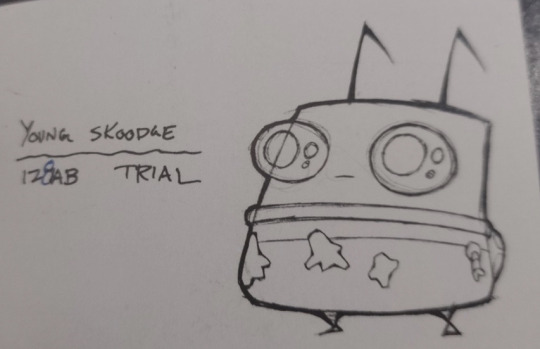
Awww, look at that lil’ mans! Look at his teeny noodle arms!! I just wanna pinch him like a marshmallow!
YOU are not immune to cuteness psychology, and neither are the proud Irken warriors. I’m going to cite Zim’s proclivity to what I can only describe as paternal bonding as a demonstration of this response, but before you go reminding me about his pak defects, it’s far from the only evidence that this is a natural Irken trait.
Check out little Timmy (importantly, the surrounding response to him), a hilariously out of place youngster who appeared briefly in the trial transcript for the sole purpose of a dark gag and to get us some lore revealed.
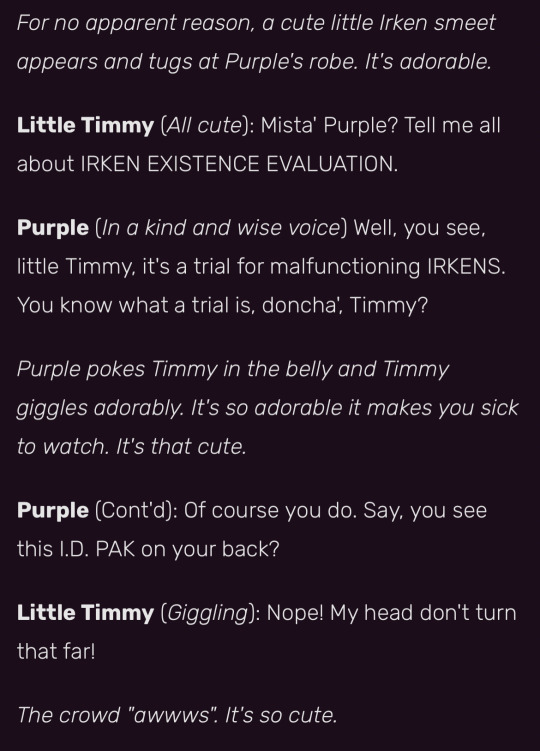
Take further note of the complimentary nature of smeets themselves.
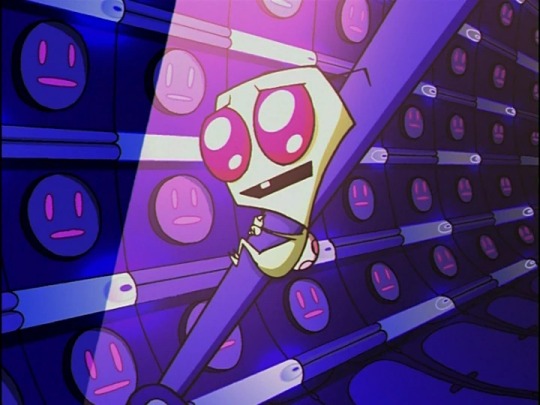

Suddenly finding themselves alive, fresh Irken babies too, like the hatched gosling, begin to immediately seek an emotional attachment with the first animate thing they see. While mobile and fast learners, smeets are far from being able to truly fend for themselves. They’re tiny and naive and they need lots of mental enrichment/teaching. They also play and form something akin to friendships, much like human children. In the bygone era before Irkens were so reliant on Paks and all of the advanced technology of the modern empire, smeets would have been exceedingly vulnerable. All signs point to a phase in Irk’s natural history where they were once nurtured after by adults of their own kind, and commonly bonded with their caretakers. This could mean compact family units, or maybe even a communal raising situation, akin to penguin crèches (Personally I like to headcanon that the tallests/queens were traditionally the only breeding members of the population but that’s neither here or now). Either sense, the evolutionary remnants of a parental creature are still around.
Taking all that to note, instead of perceiving Zim as the bizarre outlier to the Irken condition when it comes to having this soft spot, I instead see him as an opportunity to see natural behaviors in action without the suppression of his militarized society and its distractions. Even someone as warped and selfish as he can be is still very, very full of love to give that he doesn’t even understand enough language to describe. He pretty clearly shows he has no cultural understanding or reference of cuteness, and still, he’s not so different in this “weakness” than the very humans he manipulated into fawning over Ultra Peepi. It just took an example his own sensibilities could relate to instead of an unfamiliar, repulsive alien rodent.
And when he’s given the rare circumstance to show that potential, well-

*(With the rough shape/size down, no nose, and huge, bug-like eyes, Li’l Meat man may actually be a great approximation of the key “smeet schema” features. More importantly, it was made to specifically resemble Zim himself)
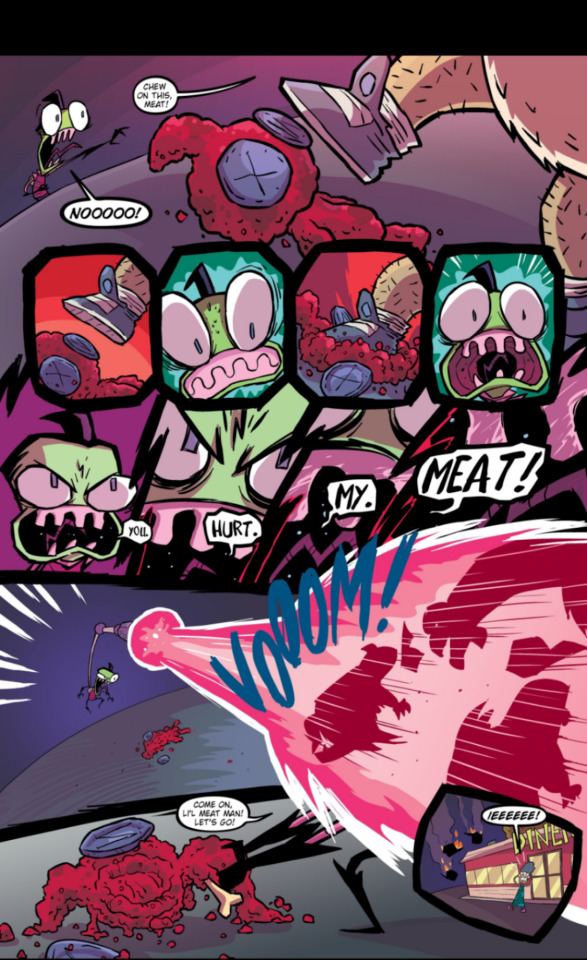
- I feel that’s downright adorable.
#invader zim#iz#iz headcanons#iz theory#irkens#iz comics#iz analysis#Li’l meat man#long post#scarlet talks about things#baby schema
165 notes
·
View notes
